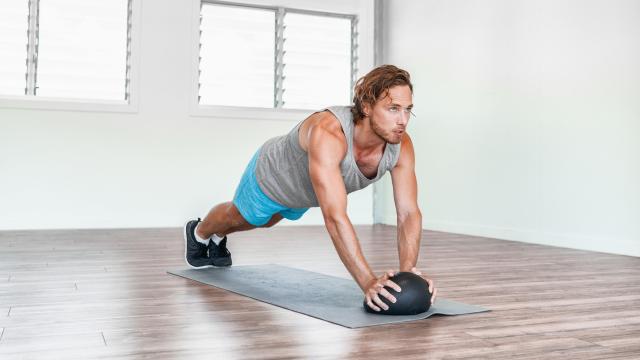You may have heard dumbbell exercises are better than barbell ones because they work more of your “stabilisers,” or that free weights are better than machines for the same reason. But what are stabiliser muscles? Are they really neglected with machine exercises, and are they that important to train?
What are stabiliser muscles?
This is going to get fuzzy because there isn’t really agreement on what stabiliser muscles even are. This 2014 study searched the literature for mentions of stabiliser muscles and attempted to put together a definition. Here’s what they came up with:
muscles that contribute to joint stiffness by co-contraction and show an early onset of activation in response to perturbation via either a feed-forward or a feedback control mechanism.
OK, stabiliser muscles are muscles that, well, stabilise. Which muscles are those? That’s a harder question. You can find plenty of research on “lumbar [lower back] stabilisers” or “trunk [core] stabilisers” or “knee stabilisers.” But these don’t turn out to be specific muscles that only stabilise joints. For example, this study on knee stabilisers names four muscles that are part of the quadriceps and hamstring muscle groups (the big muscle groups on the front and back of the thigh, respectively). Are those stabilisers, or are they simply muscles that move the legs?
One exercise’s stabilisers may be another’s main movers
This is why I don’t worry too much about machines neglecting “stabilising” muscles. If you do a variety of quad exercises and a variety of hamstring exercises, you’re pretty much guaranteed to hit the quad and hamstring muscles that act as knee stabilisers when you’re running and jumping.
Or to use another example: single-leg exercises like step-ups and lunges are great for working your abductors (hip muscles) and adductors (inner thigh muscles) because those muscles work to keep your leg steady as you put weight on it. But if a person never did single leg exercises, they could still hit those muscles by doing exercises that target them as main movers, like the adductor and abductor machines.
Being stable is about coordination, not just strength
If we look again at research on knee stabilisers, scientists have a theory that it’s good to use those stabiliser muscles while running and jumping. This isn’t just about the strength of those muscles, but also your ability to activate them when they’re needed.
So the way you keep your knees stable is not just by doing free weight exercises — although those are great — but also by doing running, jumping, pivoting, and cutting exercises. (Think soccer players running around cones and rope ladders.)
In other words, practice is important to joint stability, not just strength. If you want to be steady and stable while performing certain motions, you’ll need to train your brain to drive those muscles at the right time and in the right order.
Strength and stability are sometimes at odds
So what should you do in the gym? You may notice that strong people usually use a mix of exercises. They might squat and bench with a barbell, but finish off their sessions with a dumbbell bench press or leg extensions. There is a continuum to working out, with strength on one end and stability on the other, and each of those exercises falls at a different point on that continuum.
Let’s use bench press as our example. In a barbell bench press you need to use your legs to stabilise your torso, your torso to make a stable platform for your arms, and your arms to move the weight. Even though you’re training your pecs and triceps as the main movers, you’re getting a lot of shoulder, core, back, and leg muscles involved as stabilisers.
We can involve our stabilisers more if we were to do something like a dumbbell bench press with our back on a yoga ball. We would have to work harder to keep everything steady, but as a result, we wouldn’t be able to use nearly as much weight. We would be training stabilisers more but the main movers less.
We’d get the opposite in a chest press machine. There, you don’t have to do much stabilising at all — just whatever it takes to sit in the chair without falling out. The pecs and triceps are no longer limited by what our stabilisers can handle, so we can “lift” even more weight. (That of course comes with the caveat that you can’t compare machine labels to barbell or dumbbell weights; the mechanics are different.)
So do you need to “train” your stabilisers?
My take is this: If you train every part of your body, no matter how you do it, you will end up training all your stabiliser muscles. Yes, even if you do an all-machine routine. The routine only has to be well-rounded.
If you’ve been sticking with “functional” exercises that require a lot of stabilisation, you are probably doing plenty for your stabilisers without really thinking about it. The tradeoff is that you may not be giving the main movers of each exercise as much work.
You can easily get the best of both worlds by doing a variety of exercises. If you never do anything that makes you feel unstable, add some single-leg exercises, carries, or other slightly unstable work to your routine. (No need to stand on a bosu, although you can if you want, I guess.) And if you do a lot of stability work, try out some machines or barbell exercises once in a while to make sure you’re building strength too.

Leave a Reply
You must be logged in to post a comment.